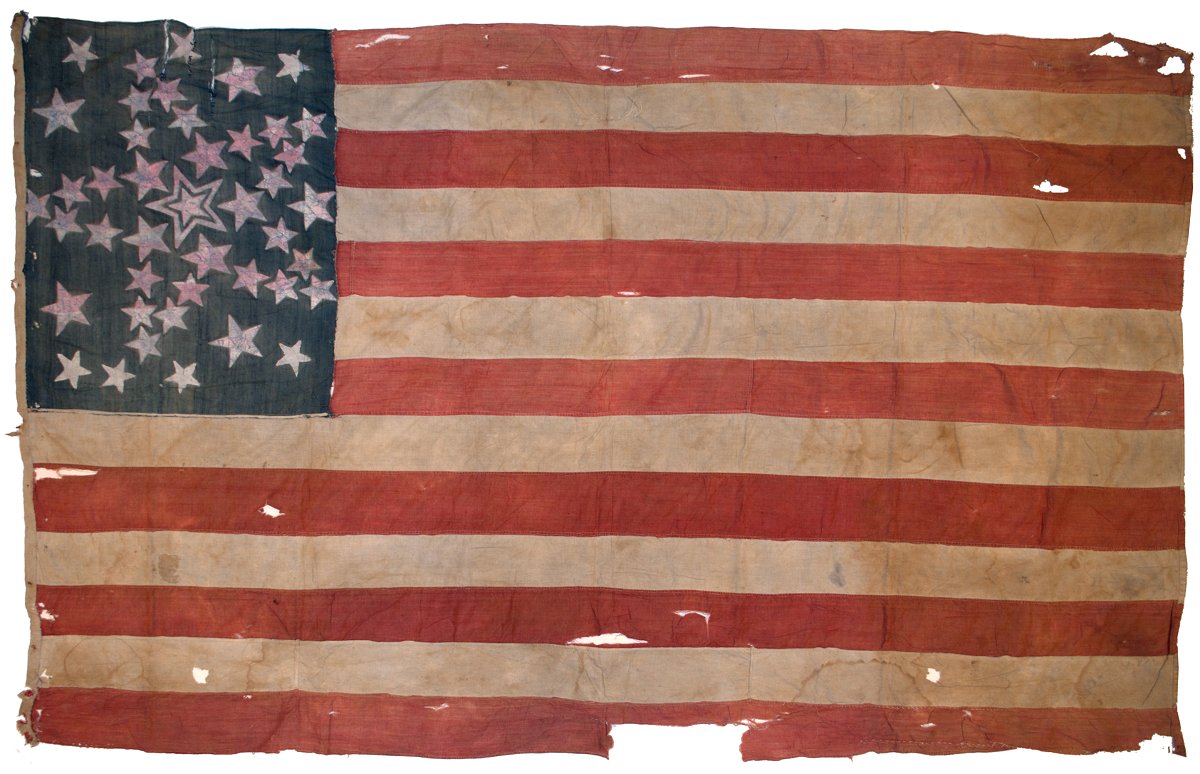
Of the many rare star counts that can be witnessed on
American Flags, 43 stars is among the rarest. Washington
became the 42nd state on November 11, 1889. 42 stars
would have become the official count in July 4, 1890,
and for nearly 8 months following Washington's
statehood, flag makers across the country manufactured
42 star flags in anticipation of it becoming official.
However on July 3, 1890, just one day before 42 would
have become official, Congress brought Idaho into the
Union as the 43rd State, making 43 the official count on
July 4, 1890. Then, just seven days later, on July 10,
1890, Wyoming achieved Statehood, and we would maintain
44 states from 1890 until the admission of Utah on
January 4, 1896, nearly 6 years later. Although 43 stars
remained official until July 4, 1891, flag
manufacturers, both home and commercial, did not produce
43 stars in any great number, since they were obsolete
almost immediately. Few were produced and even fewer
have survived. Close examination of this flag
shows evidence, based on the wear and craqueleur of the
painted stars, that the seven small outlier white stars
were painted at a later time. This means that the
flag began its life during the last year of the
Civil War, with 36 stars, and was updated in 1890 to 43
stars.
Aside from
the fact that this flag is a 43 star
flag, it is exceptional on several other accounts. It is
certainly unique and probably the rarest and most
desirable of all 43 star flags known. The flag is made
entirely of cotton and is homemade. The beautiful great
star pattern is painted on both sides of the canton in
white paint. Great Star flags were popular from the
1840's through the end of the Civil War, and the last
commercially manufactured Great Star patterned flags
featured 38 stars. By 1890, the pattern was generally
supplanted by the traditional row pattern that we know
today. This is one of the latest, if not the latest,
Great Star patterned flags in existence. Additionally,
the extremely folky presentation of the flag, with the
variable sized stars, the "halo" around the large center
star, the free rotation of the stars around their axes,
and the whimsical manner in which the maker inserted
additional stars that would not fit in the Great Star
itself, all combine to form one of the most spectacular
cantons found on any American Flag of any period.
|

